The Show Caves, the Pinnacles and the Headhunter’s Trail
Our group of intrepid explorers went to Mulu National Park to take on the Pinnacles, before proceeding to Limbang via the Headhunter’s Trail. The entire expedition took five days total, and all treks to the Pinnacles are set at a minimum of 3 days and two nights for the safety of the trekkers.
Where is Mulu?
Mulu National Park is situated in Miri division, Sarawak, Malaysia.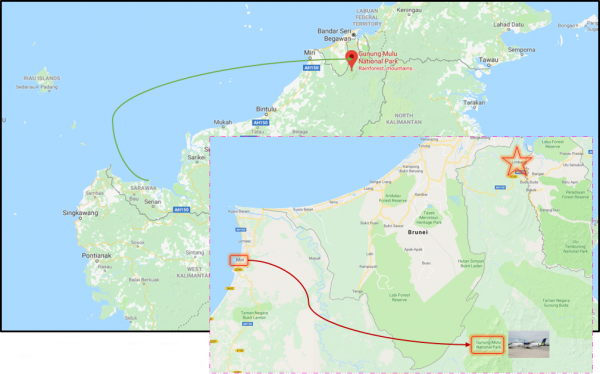
It is known for a 4-show caves (Deer & Lang's Caves, Cave of the Winds & Clearwater Cave) and popular for the Pinnacles & Headhunters' Trails. Mulu can be accessed by airplane from Kuching, Miri or Kota Kinabalu in Sabah or on foot and boat via the Headhunter trail starting from Limbang to the national park.
Schedule of MASwings flights to and from Mulu as of 25 March
| TUESDAY / FRIDAY / SUNDAY |
| FLIGHT NO. |
ORIGIN/FROM |
DESTINATION |
TIME |
| DEPART |
ARRIVAL |
| MH 3630 |
MIRI |
MULU |
0925 |
0955 |
| MH 3631 |
MULU |
MIRI |
1015 |
1045 |
| MH 3752 |
KUCHING |
MULU |
1250 |
1425 |
| MH 3252 |
MULU |
K.KINABALU |
1445 |
1535 |
| MH 3257 |
K. KINABALU |
MULU |
1255 |
1350 |
| MH 3753 |
MULU |
KUCHING |
1410 |
1550 |
| MH 3632 |
MIRI |
MULU |
1400 |
1430 |
| MH 3633 |
MULU |
MIRI |
1450 |
1520 |
| MONDAY / WEDNESDAY / THURSDAY / SATURDAY |
| FLIGHT NO. |
ORIGIN/FROM |
DESTINATION |
TIME |
| DEPART |
ARRIVAL |
| MH 3630 |
MIRI |
MULU |
0925 |
0955 |
| MH 3631 |
MULU |
MIRI |
1015 |
1045 |
| MH 3823 |
KUCHING |
MULU |
1150 |
1320 |
| MH 3822 |
MULU |
KUCHING |
1310 |
1445 |
| MH 3255 |
MIRI |
MULU |
1355 |
1425 |
| MH 3254 |
MULU |
MIRI/K.KINABALU |
1445 |
1515/1635 |
Sarawak’s World Heritage Site (UNESCO)
To be a UNESCO World Heritage Site recognizes heritage sites that have outstanding universal value and provides the highest possible protection for those sites, considered to be important to all the people of the world in this and all future generations. For an area to be placed on the list of natural World Heritage Areas it must have at least one criteria of importance, whether based on cultural or natural values, and Mulu meets all of those criteria!
The Pinnacles
No other place on earth could compare to the Pinnacles in Mulu National Park. Besides the climb to the pinnacles, you will see some of the most pristine and untouched Rainforests of Borneo surrounding you, you can feel the freezing cold rivers and breathe the fresh, clean air. The Pinnacles viewing point is a 2.4 km ascending hike to 1200m above sea level.
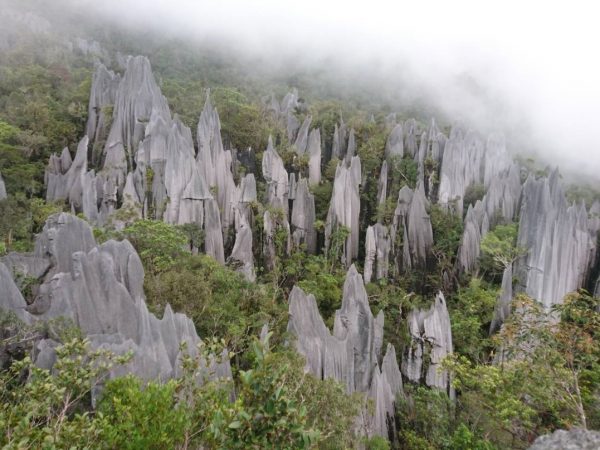
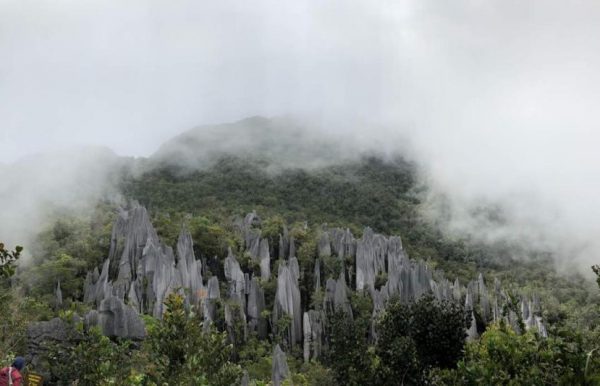
While the climb itself is not overly strenuous in terms of stamina, there is a high slip risk as the terrain can be treacherous, so please note the following warnings:
- The Pinnacle climb is listed as a high risk and extreme activity, therefore the Park offers it only as a 3 days 2 nights trip, nothing shorter.
- You are not permitted to climb the Pinnacles unaccompanied, you must have a licensed guide at all times.
- Listen to your guide (abandon the climb during heavy rain falls, when cut off times are exceeded, other extenuating circumstances)
- Listen to your body. Fatigue can be lethal if you lose concentration. Keep hydrated. If you are injured or overly fatigued, inform your guide.
- FOCUS on your foot placement. The trek is full of slippery surfaces and jagged rocks, and full attention to the climb is required.
- Do not stand too long at the view point, time is of the essence – going down is tougher than going up in daylight, it is even worse in the dark!
|
DAY 1 – Getting there
The Mulu National Park is a short drive from the Mulu Airport, where you will have to register your entrance, with fees depending on duration of the stay and activities that are available in the National Park.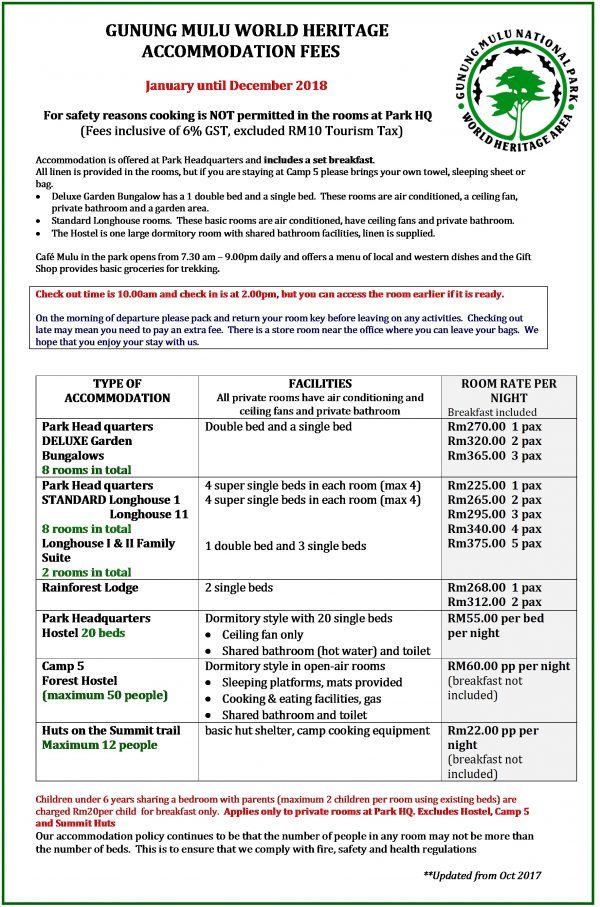
Gunung Mulu Accommodation Fees, GST no longer included in the price.
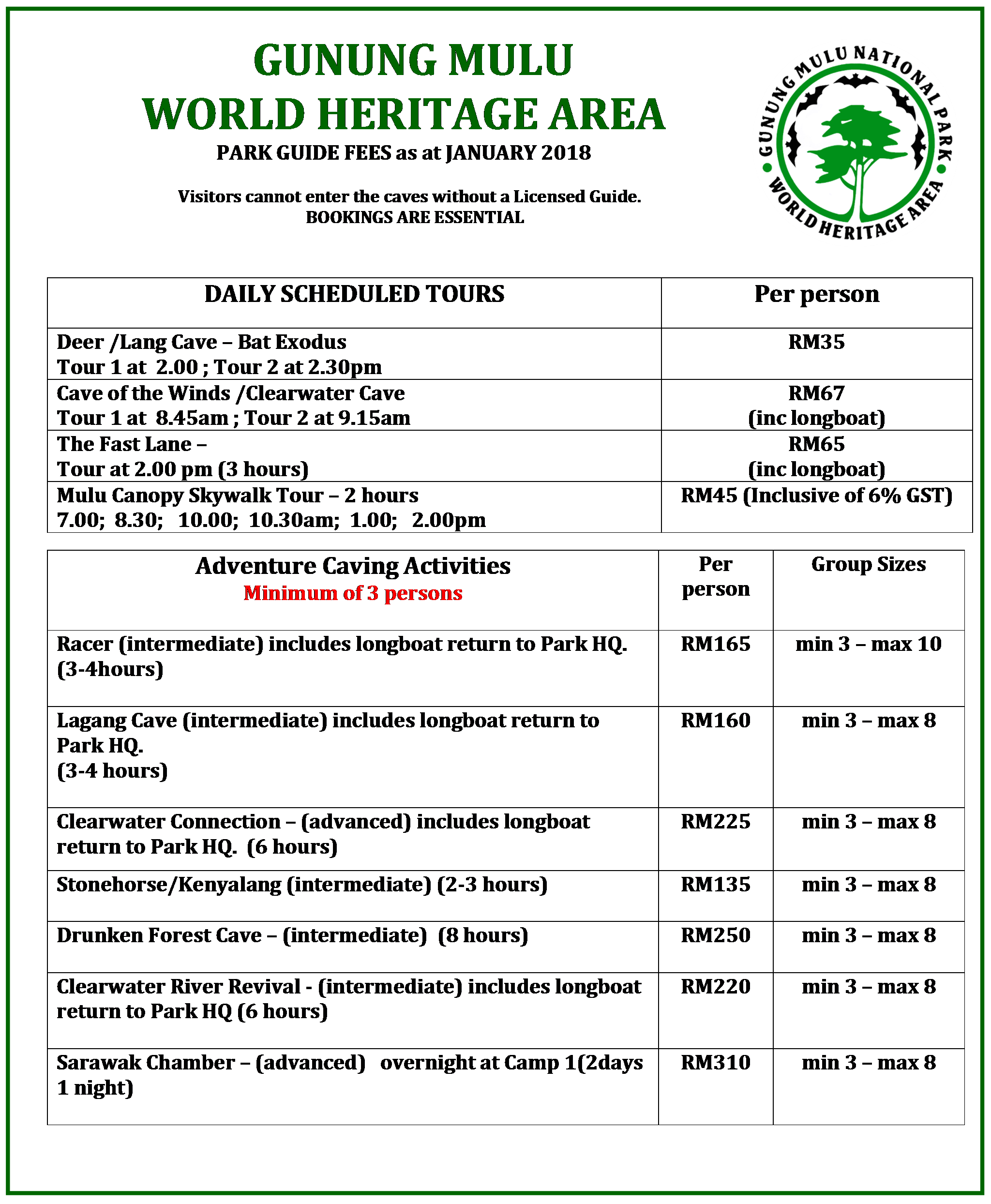
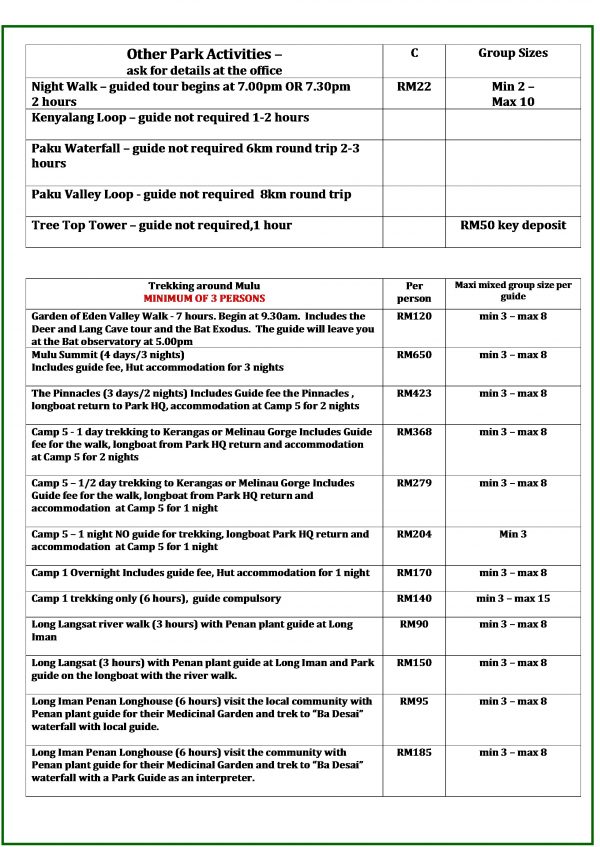
From here you can decide what you are going to do around the National Park.
While the Pinnacles trail requires prior booking, there are unguided walks you can go on, like the Botanical Heritage Trail (1.5km loop), The Kenyalang Loop, The Paku Valley Loop (8km), The Paku Waterfall and Kuala Litut and Camp 5.
Guided walks include the Mulu Canopy Skywalk, The Night Walk, Garden of Eden Valley Walk and The Mulu Summit Walk.
Show Caves and the Bat Exodus
After arriving in Mulu, the group proceeded to Park Headquarters to register and to place our bags in the lodging area, before beginning the exploration of the show caves. On the agenda, the Deer and Lang caves and witnessing the bat exodus.
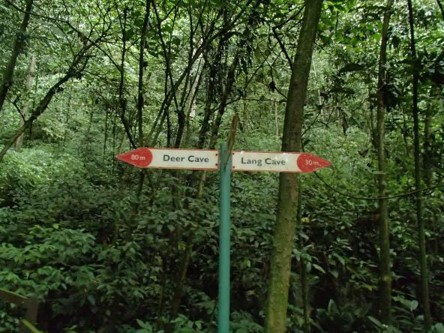
Deer and Lang Caves
The caves of Mulu demonstrate an evolutionary history of more than 1.5 million years.According to the locals, the Deer Cave was named so because that are was were the Berawan and Penan people used to hunt their deer. The Deer Cave is known for the Lincoln profile, visible from the inside of the cave. The giant doline (or sinkhole) called the “Garden of Eden” offers one of the world's finest examples of the collapse process in karstic terrain, where the jungle floor fell through into the cave below, leading to a terrarium-like rainforest surrounded by cave walls.
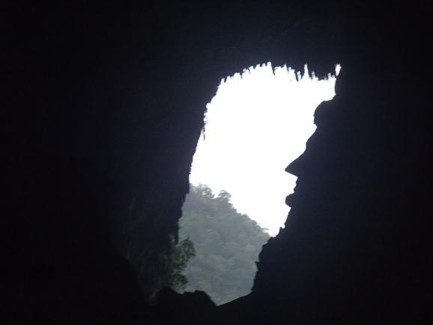
HOT TIP: If you're visiting the Deer Cave, bring a post card or letter! This cave is the only UNESCO natural heritage site that has its own functioning mail box! Mail yourself a postcard and be the proud owner of a postcard mailed from the bowels of a cave that is millions of years old.
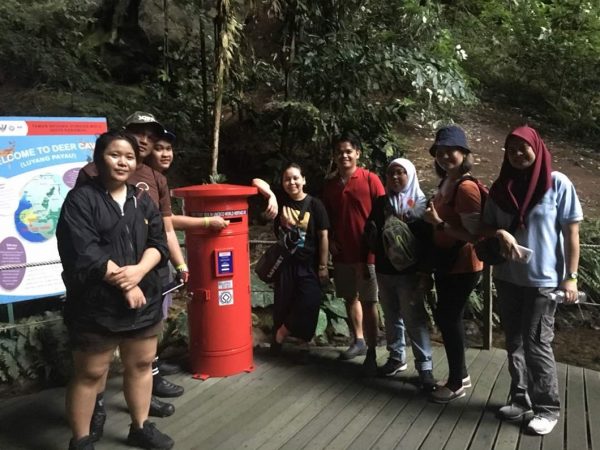
Just 100 meters away is the Lang Cave, discovered by a man of the same name. Small and intimate, with walls beautifully decorated with long shawls, layers of rim stone pools on the floor, and throughout the cave, spectacular stalagmites and stalactites.
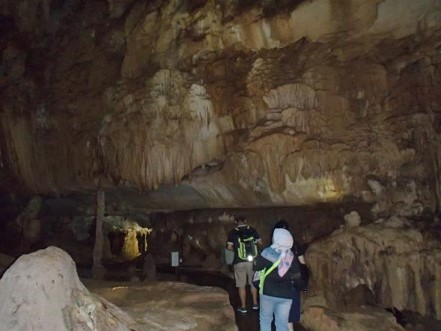
Bat Observatory
Around 5-6pm, we proceeded to the Bat Observatory just outside the Deer Cave to wait for the “Bat Exodus,” where millions of bats residing in the cave leave to hunt for insects. Unfortunately during our trip, there were very few bats thanks to the rain and the fact that the Exodus had happened the evening prior.
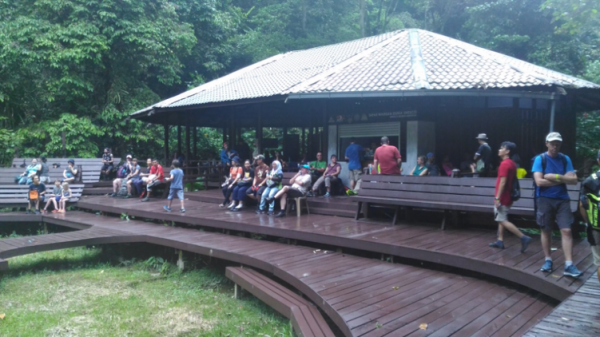 Bat Observatory platform where visitors can lay back and watch bats swarm overhead
Bat Observatory platform where visitors can lay back and watch bats swarm overhead
 The mouth of the Deer Cave, where the bats exit
The mouth of the Deer Cave, where the bats exit
DAY 2 – Batu Bungan, Showcaves and the Hike to Camp 5
The People & Longhouse
Day two began with a boat ride to Kampung Batu Bungan, a Penan settlement area along the Melinau River. Here the Penan people sell their handicrafts and wares, from woven bags to beaded accessories, and carved decorations to functioning blowpipes (darts included).
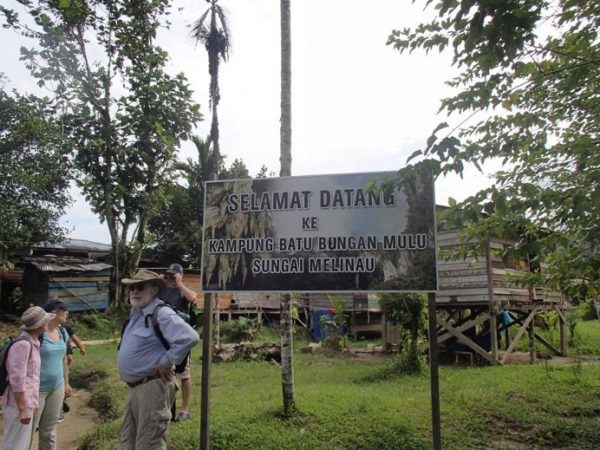
 Penan woman demonstrating how to use a nose flute, a traditional instrument of the Penan
Penan woman demonstrating how to use a nose flute, a traditional instrument of the Penan
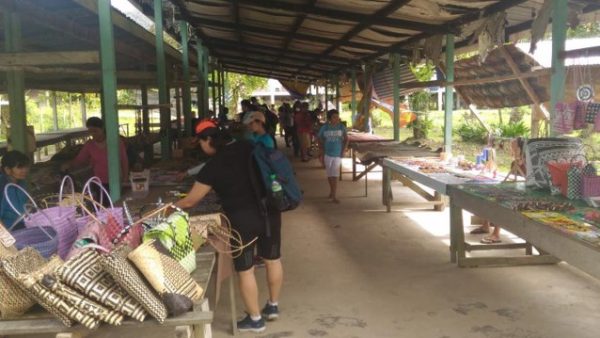
The Penan people selling their wares, everything from handwoven bags to Belian seeds from the jungle.
After buying knick-knacks and interacting with the local Penans, our group moved on to the Wind cave and Clearwater caves by boat.
Wind & Clearwater Cave
At the right time of the day, walking through the narrow paths of the Wind Cave, you can feel the winds buffeting you due to air pressure. It is really something one has to experience to explain. The paths through the cave system are all that remains of what used to be an active river flowing through stone.
After the Wind Cave, we continued by boat to the Clearwater cave. The famous 250-stepped staircase leads up to the mouth of the cave, and many more steps lie within, so those who aren't feeling up to the challenge can relax at the foot of the steps, and enjoy the clear water rivers that run out of the caves.

The Clearwater Cave is named for the crystal clear river that flows through for over 200km of cave passages in this system.
After exploring the cave and splashing around in the clear streams nearby, we had our lunch and proceeded by long boat for about 45 minutes to the drop off point called Kuala Berar. From there, our trek to Camp 5 began.
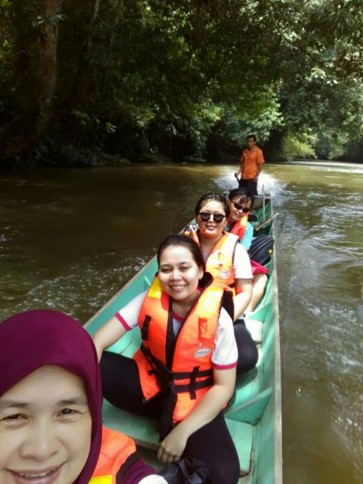
The Walk to Camp 5
The walk from Kuala Berar to Camp 5 is 7.8km in length and was relatively easy to walk, with clearly marked paths, though at times the roots of the trees were a hazard. One has to be alert while walking through the rainforests of Borneo, and always look before you step.
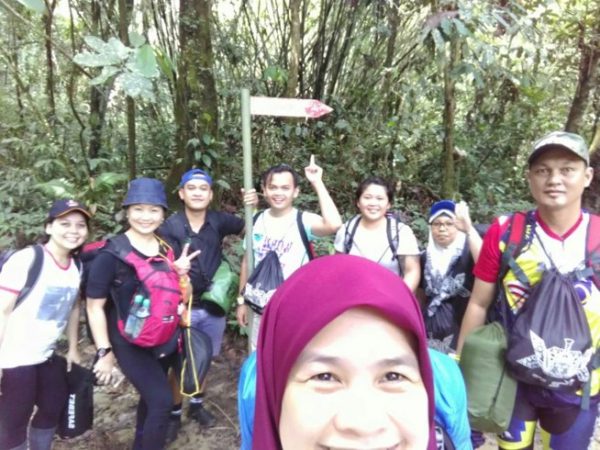
Our team at Kuala Terikan drop off point.It was a test on our abilities that would be necessary during our walk to Limbang along the Headhunter's trail on day 4, during which we would also have to carry all of our own bags.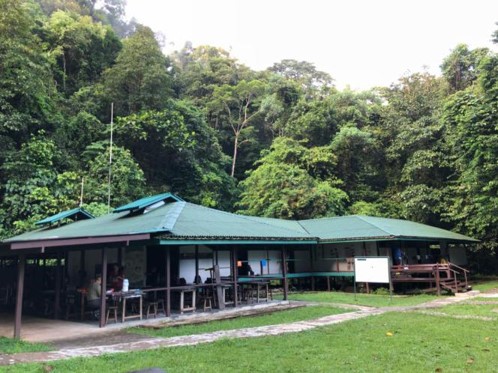
Camp 5 lodging and kitchen area
It was fortunate that we walked this distance before attempting pinnacles on the next day, as it gave us a taste of what was to come. Two of our team mates ended up sitting out the Pinnacles climb for the next day, as they were not confident that they would be able to make the climb safely. Reminder to all climbers, as the Pinnacles climb requires climbing ladders, ropes and walking through areas with very sharp rocks. If you feel your balance or alertness is impaired, inform your guide
at any time.
DAY 3 – To the Pinnacles!
Beginning at 6.00am in the morning, our group began our ascent to the iconic Pinnacles. The trail is 2.4km in length, and rises some 1.2km up. The last section is nearly entirely vertical, with 16 ladders and many ropes to climb. Our guides set a strict cut-off schedule to ensure that those who proceeded would also make it down the trail before sunset.
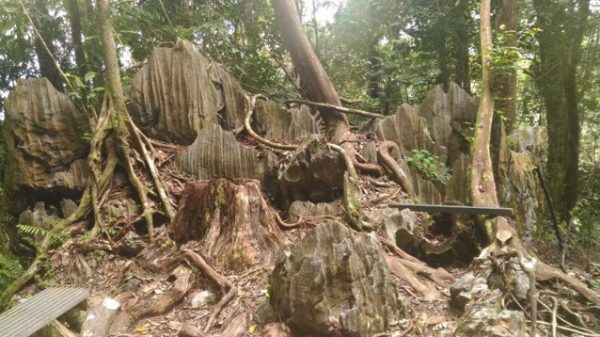 The Mini Pinaccles, located 900m from camp 5. Also the first checkpoint of the trail. Should the group not make the cut off time set by the guide, this would be one of the locations where they would be forced to turn back. This was where one of our team mates had to return to Camp 5 due to an injury.
The Mini Pinaccles, located 900m from camp 5. Also the first checkpoint of the trail. Should the group not make the cut off time set by the guide, this would be one of the locations where they would be forced to turn back. This was where one of our team mates had to return to Camp 5 due to an injury.
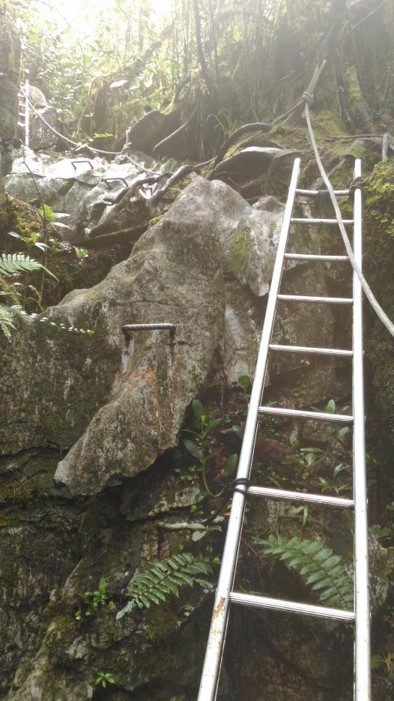
One of the sets of ropes and ladders that you would have to maneuver in order to climb the viewing platform.
Our group (sans one who was forced to turn back) was able to reach the viewing platform within 5 hours! Not without our fair share of struggle and toil, as most of us aren't well versed in hiking or mountain climbing.
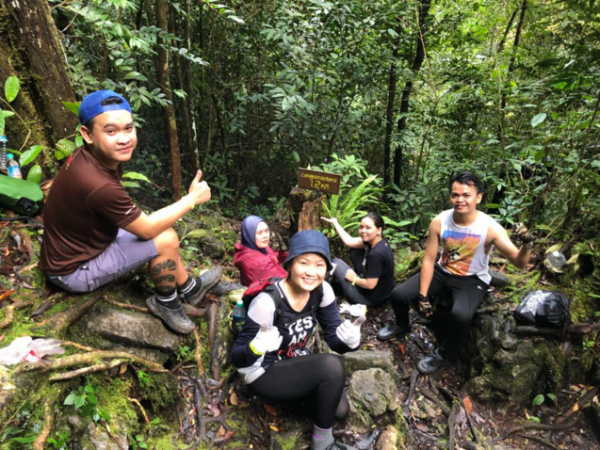 Oooooh we’re halfway there~
Oooooh we’re halfway there~
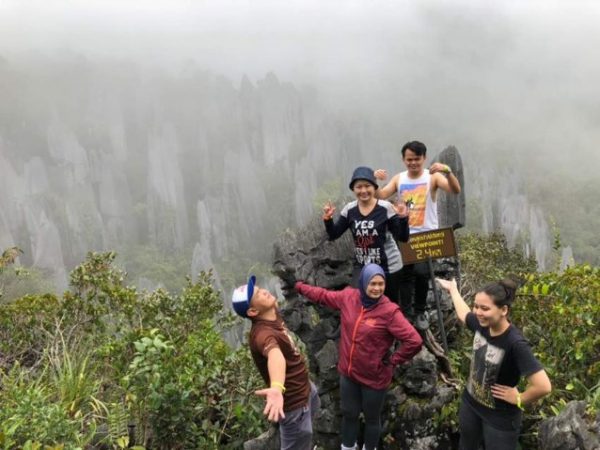 Ooooh livin’ on a prayer!
Ooooh livin’ on a prayer!
The view from the viewing platform was spectacular to say the least, and all the more enjoyable for the effort it took to reach it.


After taking some photos of the Pinnacles, having our lunch, and a short rest, it is time to begin the descent back to Camp5. The way down was tougher, as we were warned, due to us having to navigate essentially in reverse, now with sore muscles. We managed to make it back to Camp 5 before sundown, and a dip into the freezing river next to the camp helped soothe some of our aching limbs.
For the experience, it was well worth it!
DAY 4 – Headhunter’s Trail to Limbang
Early the following morning, our team gathered to head off along the Headhunter's Trail. Aside from MASWings flights, this trail is a great way of entering and leaving Mulu National Park.
We began our jungle walk as early as 7.20am to complete 11.3km trail to Kuala Terikan, with a trek that took an estimated time of around 4-5hours. Much of the Headhunter's Trail now has wooden walkways across the muddier and marsh-like areas.
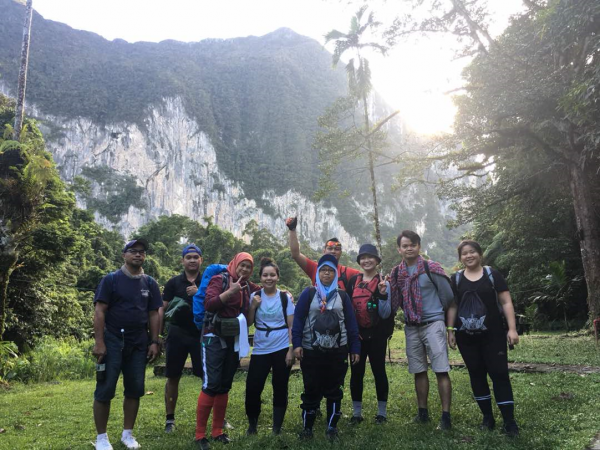 One last photo at Camp 5 as a group before our intrepid team takes on the Headhunters Trail!
One last photo at Camp 5 as a group before our intrepid team takes on the Headhunters Trail!
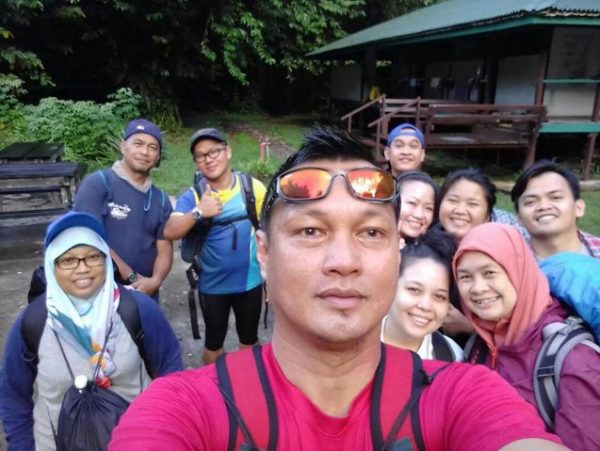 Sad to leave, but excited to explore further!
Sad to leave, but excited to explore further!
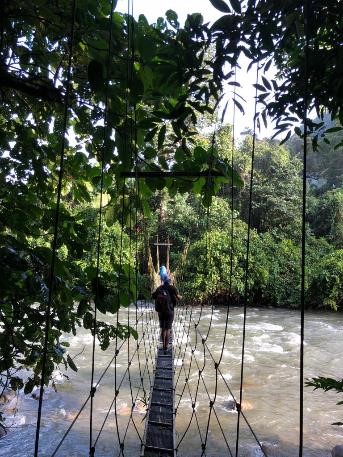
Bridge leaving Camp 5. It felt precarious with the rapids beneath, but wait till you see the Monkey Bridge!
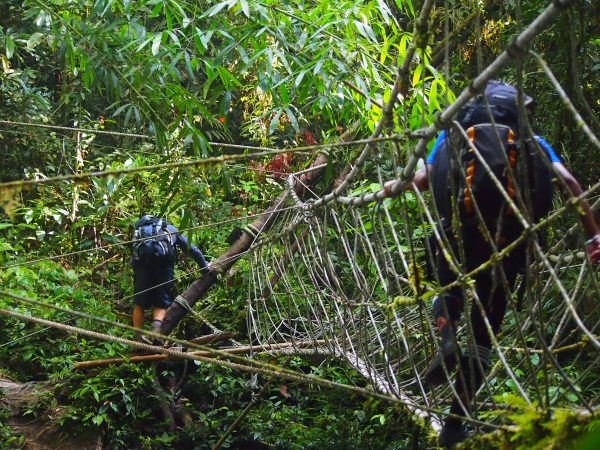
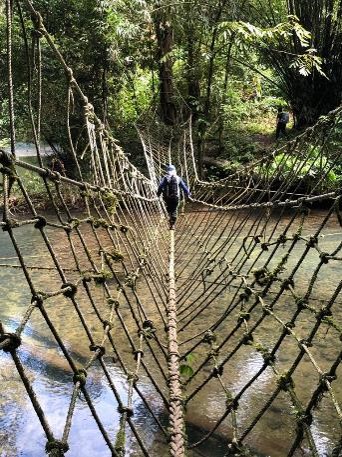 The Monkey Bridge! Better keep your balance, as this bridge is nothing more than a braided rope flanked by net-like rope barriers.
The Monkey Bridge! Better keep your balance, as this bridge is nothing more than a braided rope flanked by net-like rope barriers.
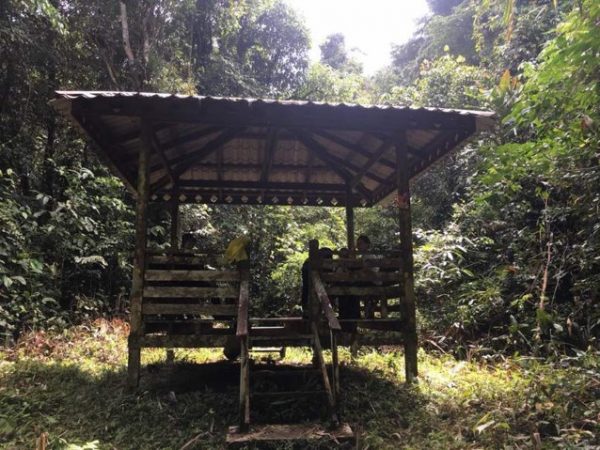 A rest stop after the Monkey Bridge.
A rest stop after the Monkey Bridge.
From Kuala Terikan, we left by boat to Ng. Mentawai (est. 20min) and continued till our last point at the longhouse, before we proceeded to Limbang town by van.
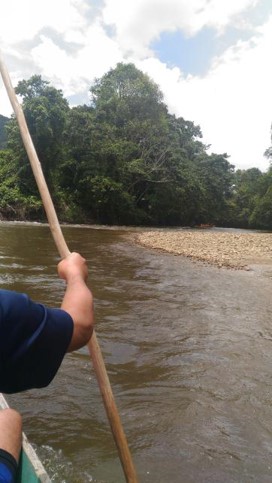
Where the river grew shallow, the boat driver would have to lift the engine out of the water and maneuver the boat using a long wooden pole along the riverbed. During the dry season, we would have likely had to get out of the boat and drag it downriver with us. Count us as lucky!
Notes: The Headhunters' Trail can also be done in reverse, starting from Limbang and ending up at the Park HQ. Either way the trek offers an excellent introduction to the rivers and rainforest of Mulu and the added attraction of a longhouse visit.
We stayed overnight in Limbang before our flights the next day.
DAY 5 – Fly from Limbang
Goodbye Limbang, we are homeward bound! Another adventure done.
Active tour agents in Miri that can provide this adventure:
Brighton Travel & TourHappy Trails Borneo ToursMajestic Leisure & ToursTransworld Travel ServiceTropical Adventure Tours & TravelMinda Nusantara Tours & Travel Agencies